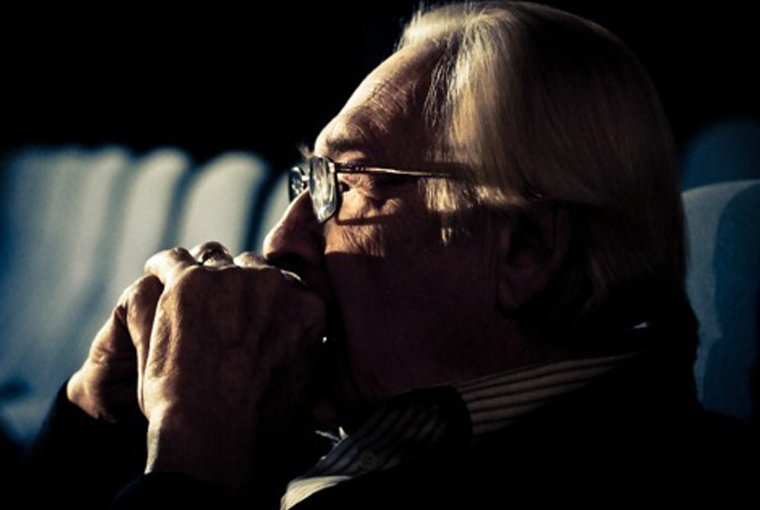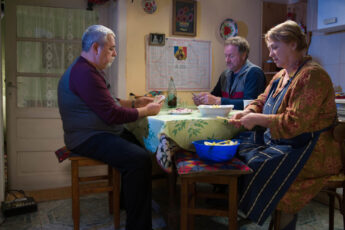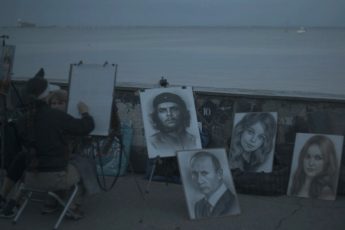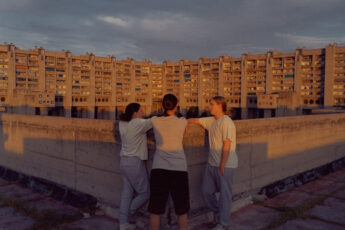Interrogation
Ania Szczepanska’s We Film the People (Nous filmons le peuple, 2012)
Vol. 42 (June 2014) by Colette de Castro
We Film the People is a Polish-French co-production which premiered in Paris at the Kinopolska festival in 2013. In the first few scenes we find ourselves on a train with the director, who muses on the history of Polish cinema. A documentary, the film sets off to answer how so many films got past censorship in Poland during communism. Between 1948 and 1989, films were theoretically subject to harsh censorship under the Communist government. Szczepanska concentrates on the 1970s, sometimes known as the golden age of Polish cinema, and wonders how radical films which sometimes openly criticized Communism government managed to air in Poland and around the world, often even being funded by the Polish government. As the question is asked, the camera pans out the window onto the rolling countryside – we are on a journey.
The documentary recurs to three main sources: interviews with directors, film archives – both actual film footage and making ofs – and interviews with politicians. The director is a cinema professor from the Sorbonne University in Paris who wrote her thesis about the Group X during the 1970s. Indeed, the film feels distinctly academic at first as we are swamped with information and sometimes cryptic video clips from different films. Gradually though, the film warms up, and we find ourselves being pulled more and more into the story.
A scene from Kieslowski’s The Amateur is presented where the main character makes a deal with his boss: this scene is described as being the famous handshake between filmmaker and man of power, becoming a key factor for our understanding of how cinema worked at that time. Revealing interviews with filmmakers confirm such explanations. Krzysztof Zanussi tells a tale about the public screening of his film The Structure of Crystals (1969) in Pesaro where Marguerite Duras asked Zanussi a long, poetic question in which she claimed that the film was a “cry from a country in crisis”. With government representatives in the room, Zanussi could only pretend not to understand what she was saying – he felt humiliated. According to the director, the silent agreement was especially hard for Westerners to understand.
With extraordinary tales – of how Wajda’s Man of Iron got to Cannes with the help of the public despite government opposition, or how Man of Marble was successful despite attempts to restrain its access -, We Film the People! might well have claimed that cinema played a part in the political uprising of the 1980s. But fortunately it refrains from such grandiose suggestions. Rather, it shows film as an effective medium for capturing the spirit of the time in subtle reflections about the police state.
Only some of the fascinating things we discover during this film are mentioned here. Interviews with the Minister of Culture who says that all cultural decisions were made inside the party, and Michael Jagiello, the party’s Culture Minister, offer fascinating perspectives on censure. Krystyna Janda in turn explains how acting in Wajda’s films allowed her to understand what was really going on in her country, while a live recording of a conference in the 1970s reveals tensions between filmmakers and TV producers. Finally, another interview is worth mentioning: Ryszard Bugajski explains why his film The Interrogation was filmed in an “empty prison” in 1981. And the list could be much longer.




Leave a Comment